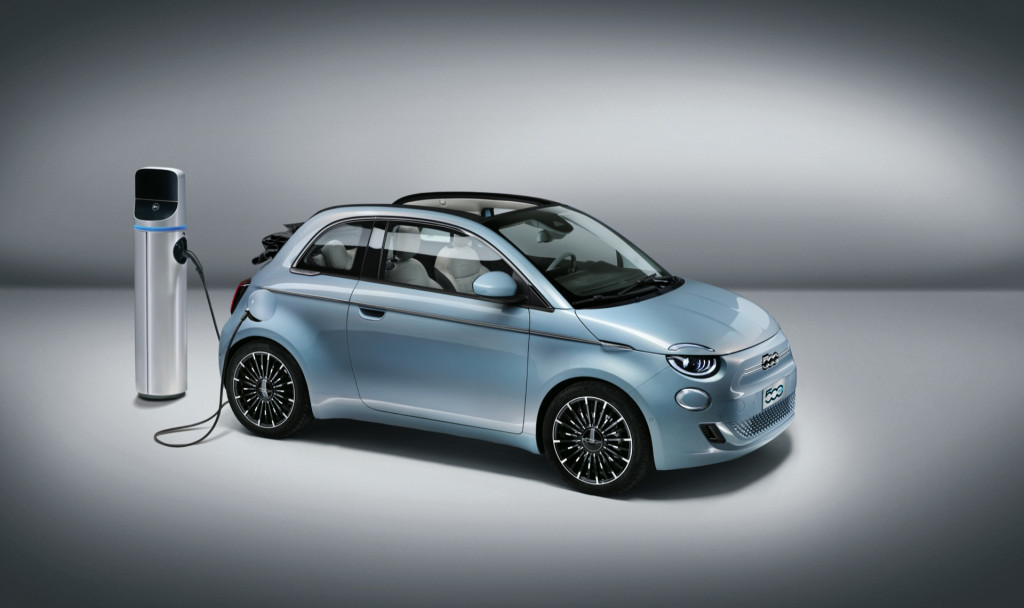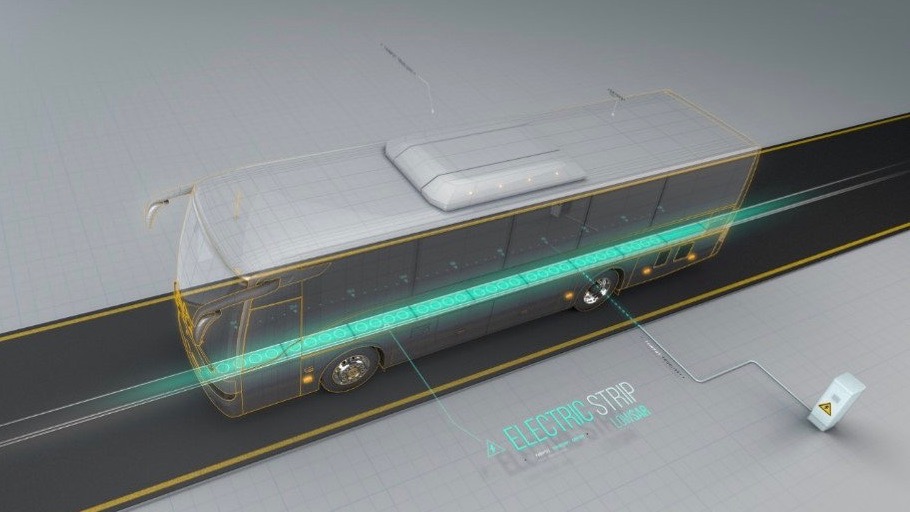Stellantis, the parent company of Dodge, Jeep, Chrysler, and Fiat, among many other brands, has revealed a Fiat 500 electric car that can travel at “typical highway speeds” without using energy from its battery pack—potentially greatly extending range.
Or, to map it out a bit differently, at slower speeds, the test vehicle might be able to actually restore some of its charge.
That’s on a test track, and so far it’s only a pilot project. The vehicle is one of several demonstrated Friday at a new test facility for dynamic wireless power transfer (DWPT) in Chiari, Italy.

Fiat 500 - Euro version, fully electric
One of these test vehicles is a Fiat New 500—the new-generation version of the Fiat 500 that’s only sold as an electric car. The previous electric conversion of the 500, badged 500e, was made for California-compliance states but not sold in Europe. The New 500 is Europe-only and not sold in the U.S.
The components for this project employ wireless EV charging tech from Israel’s Electreon, a company that electrified a 1-mile public road in Sweden. Michigan also plans a Detroit dynamic wireless charging pilot project with that company.
Stellantis also exhibited a Maserati Grecale Folgore that will be outfitted for the project. That’s the first fully electric model from the Italian performance-car brand, which announced that it will offer fully electric versions of all its models by 2025, on the way to all-EV by 2030.

Stellantis dynamic wireless charging
The facility, which was built by A35 Brebimi and configured with the help of various technology partners including ABB, Iveco, and Mapei. It’s part of the company’s long-term EV-focused mobility plan outlined last summer.
The project employs DC rather than AC electricity for the project, which helps reduce power losses, eases the interface with renewable power sources, and allows thinner cables. It also uses aluminum cables to distribute current, which the company says costs half compared to copper while being lighter and easier to recycle.

Electreon dynamic wireless charging
No power level was confirmed for this dynamic wireless test. Electreon’s system uses 20-kw modules, with multiple units used for trucks and a single one probably adequate for a small car. That compares to the output and basic configuration of another dynamic wireless system, from Qualcomm Halo, which has since been bought by WiTricity.
The infrastructure costs of implementing dynamic systems can be great; and they do require ripping out the pavement on at least part of the roadway. Stellantis’ facility might be used to study both the dynamic and static versions of inductive charging, as fundamentally the idea is the same. Adoption of the latter is likely to happen first, and as Stellantis points out, it might be useful at parking lots—or, as we’ve noted before, home driveways or garages. Although due to its cost, it’s a feature that will trickle down from the luxury market first.













